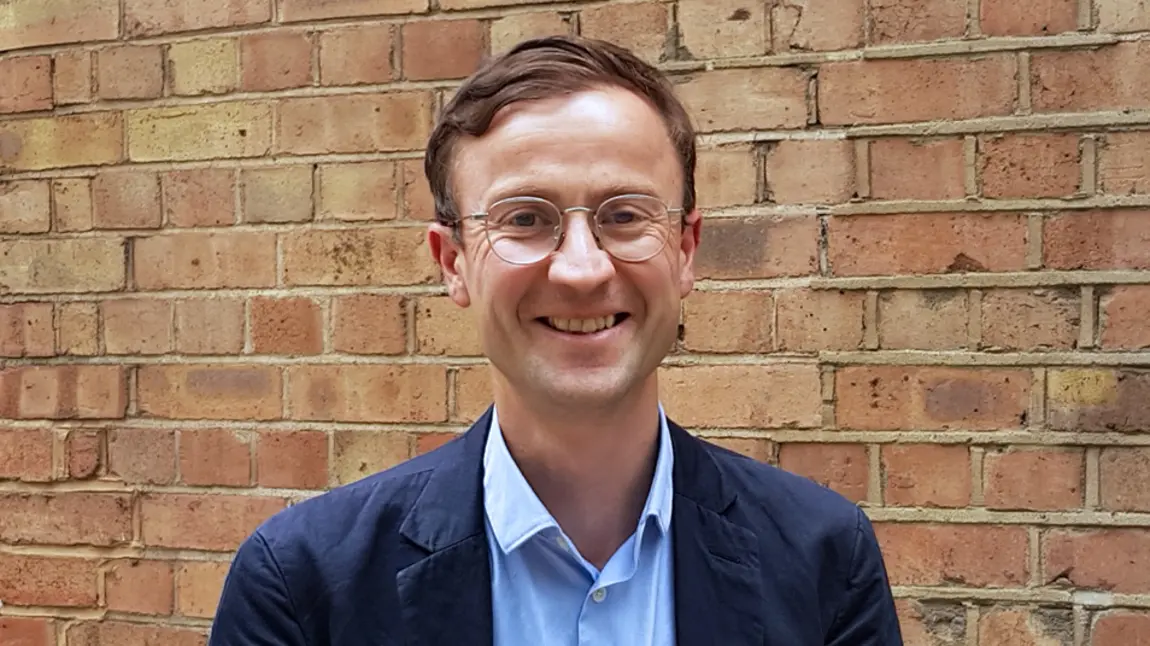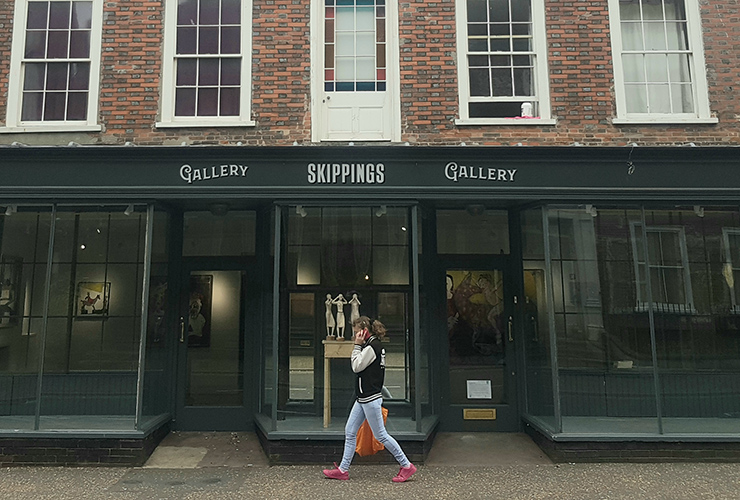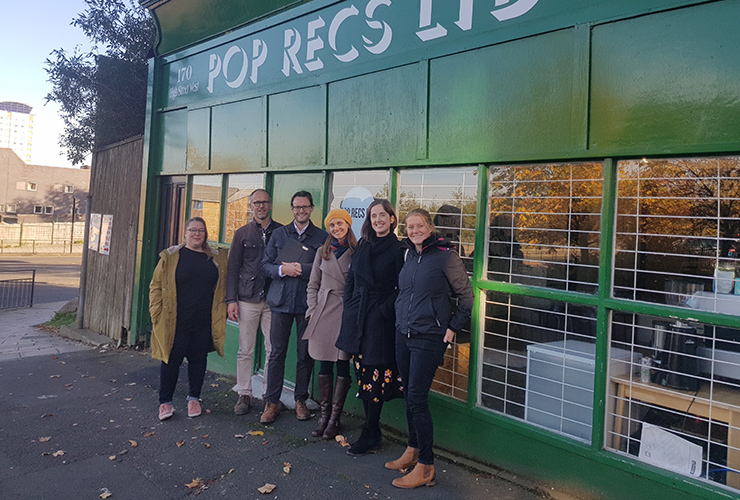Partners and pioneers – building back after the pandemic

I was heartened to see Stretford Public Hall, Greater Manchester, recently receive a hugely deserved Queen’s Award for Voluntary Service.
The staff and volunteers have been engaged for some time in shaping a new future for the hall – which is cooperatively owned by 800 local people – and the surrounding town centre. As the coronavirus (COVID-19) crisis unfolded, the Hall moved quickly from hosting community activities to being a vital part of the fight against the virus in Stretford.
This Grade II listed building and its devoted team are a good example of the type of organisation and project the Architectural Heritage Fund works with – one that uses a much-loved heritage asset to serve its area in a variety of often enterprising ways.
Community spaces on the brink
Increasingly, in many towns and places, the vital community spaces that form the fabric of day-to-day life – and which contribute significantly to people’s quality of life – have closed down or are on the brink. Town centres are struggling more than ever.
These were battlefronts before the pandemic hit and they are going to be deepened, accelerated and extended as we come to terms with our new reality.
"We need to come together to restore the fabric and spirit of our places, particularly those that were already feeling 'left behind'."
Now more than ever, we need to come together to restore the fabric and spirit of our places, particularly those that were already feeling "left behind". These financial and social difficulties are only going to get harder in the next few months and years, particularly if the UK's recession is prolonged, as well as deep. It won’t be easy and we need government, national and local, funders and national infrastructure bodies to all play a role in supporting recovery.
However, despite the gloom, we can see the outlines of what might be possible in places like Great Yarmouth.
Great Yarmouth

Great Yarmouth has evocative historic buildings and a proud history – but it has been affected by post-industrial struggles, redundant public facilities and a high street and town centre that have at times been struggling to cope.
Since the 1970s, Great Yarmouth Preservation Trust has been developing projects in the town. As well as developing heritage assets like the Time and Tide Museum, the Trust has led several projects that put heritage-led regeneration at the forefront of the town’s approach to renewal.
"As well as giving historic buildings new uses – from holiday accommodation to art spaces – the Trust is now looking to develop new-build, affordable housing."
As well as giving historic buildings new uses – from holiday accommodation to art spaces – the Trust is now looking to develop new-build, affordable housing that enhances, rather than detracts from, Great Yarmouth’s superb historic architecture and streets.
They have a supportive local authority and are benefiting from a mix of funding from loans to grants. These come from a variety of sources, including the new social investment Heritage Impact Fund, managed by the AHF and supported by partners including The National Lottery Heritage Fund.
The town is also benefiting from government schemes such as the High Street Heritage Action Zone, Future High Street Fund and Towns Fund, all of which will complement or directly assist the Trust's work.
Sunderland

In Sunderland, there's the pioneering work of Tyne & Wear Building Preservation Trust. This is another of AHF’s pilot Heritage Development Trusts: organisations scaling up heritage-led regeneration in towns and cities across England.
The Trust has partnered with local social enterprise, Pop Recs, to create a new venue and music project in a former Binns department store.
Banff
And in Banff, North East Scotland Preservation Trust has just completed its latest enterprising project, creating the Silversmith’s Quarters at 49–54 Bridge Street. The formerly derelict, category B listed building has been completely refurbished and converted into three small townhouses. These will provide accommodation for the Scottish Centre for Excellence in Silversmithing.
How we can help scale up
What these examples tell us is that as a sector, working collaboratively is now more important than ever.
New partnerships can also help bring fresh ideas which could transform historic buildings for a range of new uses. It will also help make heritage seem more relevant to a greater number of people.
"The task we face is more daunting than it was at the start of 2020. But I know it is a challenge that no one has lost their passion for."
We funders and infrastructure organisations need to cultivate and maintain a funding and support ecosystem that better assists charities and social enterprises to transform heritage assets into engines of long-lasting local change. We need to work together to do that.
The task we face is more daunting than it was at the start of 2020. But I know it is a challenge that no one has lost their passion for.
About Matthew Mckeague
Matthew Mckeague is CEO of the Architectural Heritage Fund. Before this he was Director of Regeneration at the Churches Conservation Trust.
Previously Matthew worked in regeneration and economic development for two London local authorities and the consultancy practice, Shared Intelligence.
Matthew has also been a trustee and chair of the environmental social enterprise, Forest Recycling Project.
- Views expressed in the Future Heritage blog series are those of the authors, not necessarily of The National Lottery Heritage Fund.


